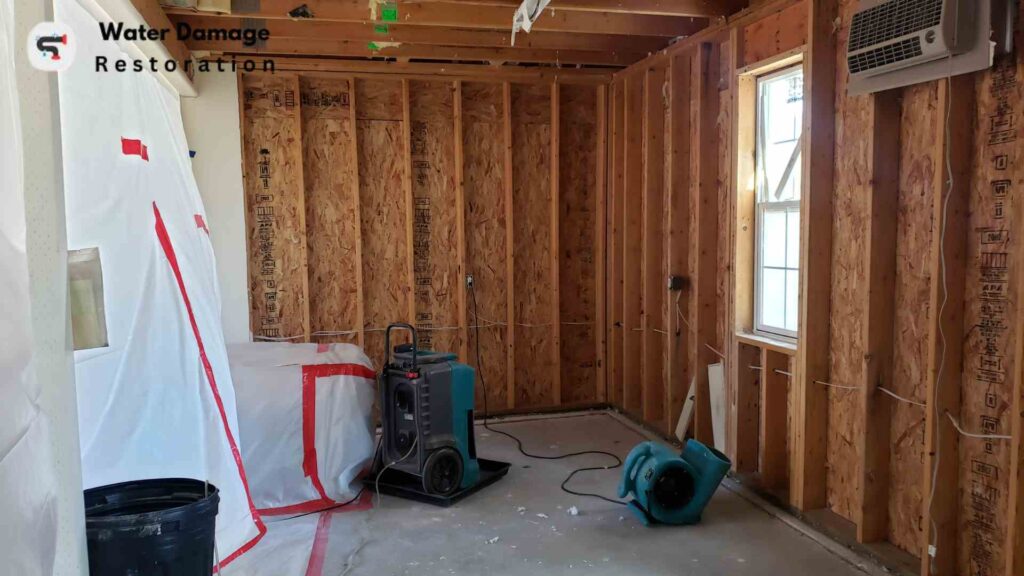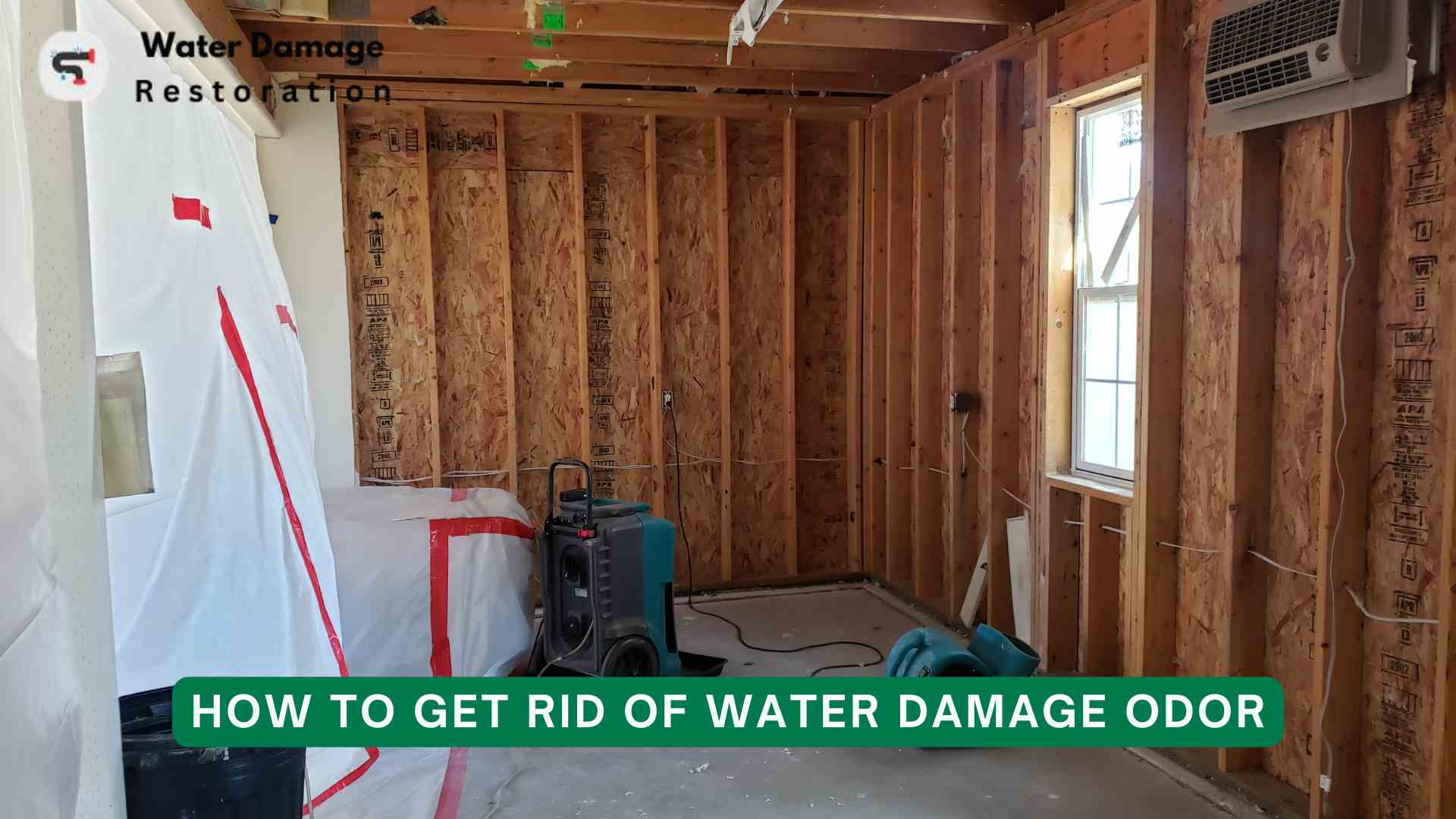Water damage can leave behind more than just structural issues, it often creates persistent, unpleasant odors that permeate your home. Whether you’re dealing with a flooded basement, water damage odor in carpet, or mildew smell after water leak, this comprehensive guide will help you eliminate these stubborn odors and restore your home’s fresh atmosphere.
Understanding Water Damage Odors
Water damage odors typically result from moisture that creates ideal conditions for mold, mildew, and bacterial growth. When water seeps into porous materials like carpet, drywall, or wood, it can remain trapped for days or weeks, leading to:
- Musty basement smells from standing water
- Carpet water damage smell from wet padding and fibers
- Mildew growth in hidden areas
- Bacterial proliferation in organic materials
The key to successful odor removal lies in addressing both the moisture source and the contaminated materials.
Immediate Steps: First 24-48 Hours After Water Damage
1. Safety First
Before beginning any cleanup, prioritize your safety by turning off electricity to all affected areas, following OSHA safety standards for flood cleanup. Always wear protective gear including gloves, masks, and eye protection when dealing with contaminated water and potentially hazardous materials. Ventilate the space immediately by opening windows and doors to improve air circulation and reduce exposure to harmful vapors. Additionally, check for any structural damage that might pose safety risks before proceeding with cleanup efforts.
2. Remove Standing Water
The first priority is removing standing water using pumps, wet vacuums, or professional water extraction equipment. Time is critical here, as you should remove as much water as possible within the first 24 hours to prevent further damage and mold growth. While working, document all damage thoroughly with photos and detailed notes for insurance purposes, as this documentation will be essential for your claim.
3. Begin Drying Process
Immediately set up fans and dehumidifiers throughout the affected area to accelerate the drying process. Remove any wet materials that cannot be salvaged, such as severely damaged furniture or belongings, to prevent them from becoming sources of ongoing moisture and odor. Focus on increasing air circulation throughout affected areas by positioning fans strategically and keeping doors open between rooms to promote airflow.

Step-by-Step Guide: How to Get Rid of Water Damage Smell
Step 1: Assess the Damage
Begin by conducting a thorough assessment to identify all affected areas in your home. This includes obvious damage like flooded carpet and padding, as well as less visible issues such as wet drywall, insulation, and damaged furniture. Don’t overlook the possibility of hidden moisture in wall cavities, behind baseboards, or under flooring, as these areas can harbor odor-causing mold and bacteria long after visible water has been removed.
Step 2: Remove Contaminated Materials
When dealing with carpet water damage, you’ll need to remove both wet carpet and padding if they’ve been saturated for more than 24 hours, as these materials rarely dry completely and often become permanent sources of odor. Cut carpet into manageable sections for easier disposal and ensure you clean and disinfect the subfloor thoroughly before installing any new materials. For other porous materials like drywall, insulation, and baseboards, removal is often the most effective approach, as these materials can harbor moisture and odor-causing microorganisms even after appearing dry.
Step 3: Clean and Disinfect Hard Surfaces
Once contaminated materials are removed, focus on scrubbing all remaining hard surfaces with antimicrobial cleaners to eliminate bacteria and prevent mold growth. For non-porous surfaces, use a mixture of water and bleach in a 1:10 ratio, ensuring proper ventilation during application. Allow all surfaces to dry completely before proceeding to the next step, as any remaining moisture can undermine your deodorization efforts.
Step 4: Deodorize and Treat Remaining Materials
Natural deodorizing methods can be highly effective for treating remaining odors. Sprinkle baking soda generously on carpets and let it sit overnight before vacuuming to absorb odors naturally. Place activated charcoal bags throughout affected areas to continuously absorb odors and moisture from the air. White vinegar in spray bottles can be used for surface treatment, as its acidity helps neutralize alkaline odors commonly associated with water damage.
For more stubborn odors, commercial deodorizers may be necessary. Apply enzyme-based cleaners specifically designed to break down organic matter that causes odors, following manufacturer instructions carefully. In severe cases, consider using ozone generators, but always follow safety guidelines and ensure proper ventilation, as ozone can be harmful to humans and pets. Professional-grade antimicrobial treatments may also be worth considering for persistent odor problems.
Specific Solutions for Different Areas
How to Get Rid of Musty Smell in Basement After Flood
Taking immediate action is crucial when dealing with basement flooding. Start by pumping out all standing water as quickly as possible, then remove wet materials immediately to prevent them from becoming permanent odor sources. Increase ventilation throughout the basement using fans and dehumidifiers, and apply antimicrobial treatments to all surfaces to prevent mold and bacteria growth.
For long-term prevention, consider installing proper drainage systems around your foundation and sealing any cracks that could allow water infiltration. Maintain humidity levels below 50% year-round and conduct regular basement inspections to catch potential moisture problems early.
Carpet Smell After Water Leak
If your carpet is salvageable, begin by extracting all moisture using professional-grade equipment, as standard household vacuums cannot remove enough water to prevent odor development. Apply antimicrobial treatments specifically designed for water damage, followed by enzyme cleaners that break down organic matter causing odors. Steam cleaning with hot water extraction can help remove remaining contaminants, but ensure complete drying afterward using fans and dehumidifiers.
However, carpet replacement becomes necessary when carpets have been saturated for more than 48 hours, exposed to sewage or contaminated water, show visible mold growth, or continue producing persistent odors even after professional cleaning. In these cases, the carpet and padding should be completely removed and replaced.
Mildew Smell After Water Leak
Address surface mildew by cleaning visible growth with bleach solution, then applying antifungal treatments to prevent regrowth. Ensure complete drying of all surfaces, as even small amounts of remaining moisture can lead to recurring mildew problems.
Don’t overlook hidden mildew, which often develops inside walls and ceiling cavities where moisture can remain trapped for extended periods. Use moisture meters to identify problem areas that may not be visible to the naked eye, and consider professional mold inspection and remediation if you suspect extensive hidden contamination.
Professional vs. DIY: When to Call Experts
DIY approaches work well for smaller water damage situations covering less than 10 square feet, especially when dealing with clean water sources like broken pipes or rain leaks. If the damage is recent, occurring within 24 hours, and affects accessible areas with good ventilation, homeowners can often handle the cleanup and deodorization themselves using the methods outlined in this guide.
However, professional help becomes essential when dealing with extensive water damage, sewage or contaminated water exposure, or structural damage that affects the safety and integrity of your home. If persistent odors remain after multiple DIY attempts, or if mold growth covers large areas, professional remediation services have the specialized equipment and expertise needed to properly address these complex situations.
If you need professional water damage restoration services, Water Damage Restoration Garland provides comprehensive odor removal and restoration services with certified technicians and advanced equipment. For immediate assistance with water damage emergencies or persistent odor issues, call (619) 558-3767 to discuss your specific situation and receive expert guidance on the best approach for your home.
How To Avoid Future Water Damage Odors?
Effective moisture control forms the foundation of preventing future water damage odors. Maintain indoor humidity levels between 30-50% using dehumidifiers and proper ventilation systems. Fix any leaks immediately, as even small drips can lead to significant moisture accumulation over time. Improve ventilation in high-moisture areas like bathrooms, basements, and kitchens by installing exhaust fans and ensuring adequate air circulation.
Regular maintenance plays a crucial role in prevention. Inspect plumbing systems regularly for signs of wear or leaks, clean gutters and downspouts to ensure proper drainage away from your foundation, and check your basement periodically for signs of moisture intrusion. Service your HVAC system annually to ensure it’s operating efficiently and not contributing to humidity problems.
Early detection can save you from major odor problems later. Install water leak detectors in vulnerable areas, monitor humidity levels throughout your home, and address any musty odors immediately before they become established. Conduct regular inspections of potential problem areas, including around water heaters, washing machines, and in basements or crawl spaces.
Advanced Techniques for Stubborn Odors
Ozone Treatment
Ozone generators can eliminate severe odors but require:
- Professional operation
- Complete evacuation during treatment
- Proper ventilation afterward
- Multiple treatments for best results
Hydroxyl Generators
Safer alternative to ozone:
- Can operate with people present
- Effective against odors and microorganisms
- Requires professional equipment
- Good for continuous treatment
Thermal Fogging
Professional technique using:
- Heated deodorizing agents
- Penetration into porous materials
- Neutralization of odor molecules
- Effective for smoke and water damage odors
Common Mistakes to Avoid
- Ignoring Hidden Moisture: Always check wall cavities, subfloors, and other hidden areas
- Using Fans Without Dehumidification: This can spread moisture rather than remove it
- Painting Over Problems: Odors will return if the source isn’t addressed
- Delaying Action: Time is critical in preventing permanent damage and odors
- Inadequate Ventilation: Proper air circulation is essential for drying and odor removal
Health Considerations
Water damage odors often indicate the presence of:
- Mold spores that can cause respiratory issues
- Bacteria that may lead to infections
- Chemical off-gassing from damaged materials
- Allergens that affect sensitive individuals
Seek medical attention if experiencing:
- Persistent respiratory symptoms
- Skin irritation
- Headaches or fatigue
- Allergic reactions
Water Damage Odor Cost Guide and Insurance
DIY Costs:
- Dehumidifiers: $200-$500
- Fans and ventilation: $50-$200
- Cleaning supplies: $100-$300
- Replacement materials: Varies widely
Professional Services:
- Water extraction: $500-$2,000
- Mold remediation: $1,000-$10,000
- Complete restoration: $5,000-$50,000
Insurance Coverage:
- Document all damage immediately
- Contact insurance company within 24 hours
- Keep receipts for all expenses
- Consider temporary living arrangements if needed
Long-term Monitoring and Maintenance
After addressing water damage odors:
- Monitor humidity levels regularly
- Conduct periodic inspections
- Address any new water issues immediately
- Maintain proper ventilation
- Consider professional air quality testing


